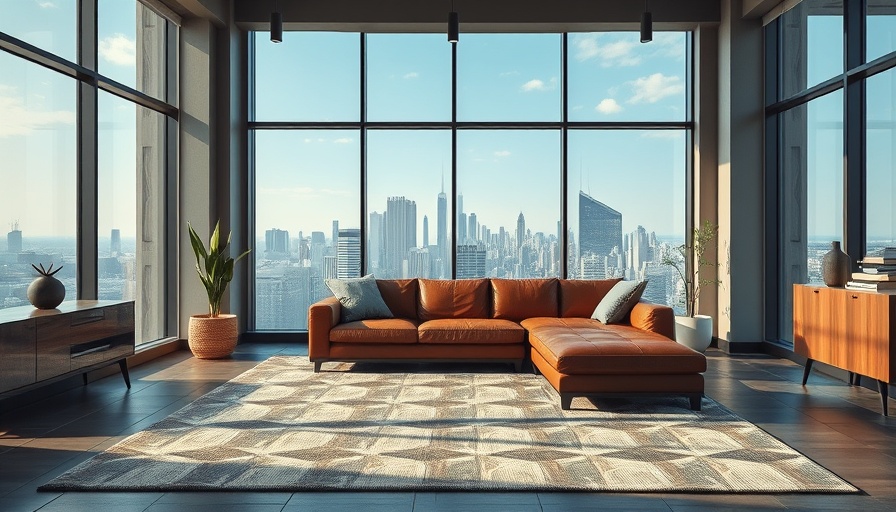
Transform Your Basement: Budget-Friendly Flooring Options to Consider
Transforming your Brooklyn basement into a functional and stylish living space can be both exciting and affordable. Many homeowners find the below-grade areas of their homes underused, but with some thoughtful flooring choices, you can enhance your basement without stretching your finances. In this guide, we explore various budget-savvy flooring ideas tailored for Brooklyn basements, focusing on styles that suit moisture-prone environments while offering aesthetic appeal.
Understanding Your Basement’s Unique Needs
One of the first steps in upgrading your basement flooring is to assess the specific conditions of the space. Basements are notorious for moisture issues that can cause significant damage if not properly managed. When considering flooring options, evaluate water-resistant or breathable materials that can withstand the basement's inherent dampness.
Moreover, understanding how you plan to utilize the basement is crucial. Will it serve as a cozy entertainment area, a silent retreat for relaxation, or simply a practical storage space? Your intended use will dictate the type of flooring that best suits your lifestyle and budget, creating a personalized plan that delivers functionality and style.
Exploring the Versatility of Vinyl Flooring
For most homeowners, vinyl flooring stands out as one of the most efficient and budget-friendly options for basement spaces. Available in an array of colors and designs, vinyl can easily mirror more luxurious materials like hardwood or natural stones at a fraction of the cost. Its moisture-resistant qualities make it especially suitable for basement environments, ensuring longevity without the worry of damage.
An added perk is that many vinyl products are DIY-friendly. This allows savvy homeowners to minimize labor costs and complete the installation independently. Whether choosing interlocking planks or peel-and-stick tiles, the process can be rewarding and straightforward. To maintain the fresh appearance of vinyl flooring, routine sweeping and the occasional mopping will suffice, making it a practical choice for busy households.
The Timeless Appeal of Carpet Tiles
Carpet tiles represent another excellent flooring option, especially for those looking to create a warm and inviting atmosphere in their basements. These tiles come in various colors, textures, and patterns—offering immense creative flexibility to homeowners seeking personalized designs.
Carpet tiles are especially beneficial for basement settings. With their ease of installation, they can be positioned in unique patterns to add visual intrigue. Additionally, if a tile becomes damaged or stained, you can replace a single tile rather than the entire floor, making it a cost-effective solution. Their sound-absorbing properties also provide comfort and can minimize noise, making them an ideal choice for entertainment spaces.
Embracing Laminate Flooring for a Stylish Upgrade
Laminate flooring is another popular and budget-conscious option that resonates with Brooklyn homeowners. Available in an impressive variety of styles that imitate more expensive hardwood floors, laminate is both cost-effective and visually appealing.
This flooring type boasts resistance to scratching and fading, making it suitable for high-traffic areas within the basement. It also provides good insulation properties, which can help regulate temperature during colder months. With simple installation processes, laminate floors make for an excellent project for those looking to make a statement in their basements.
Considerations for Your Basement Upgrade
While each flooring option presents distinct benefits, consider the physical requirements of your basement when making your choice. The following elements can impact your flooring decision:
- Moisture Control: Identify any moisture issues and consider flooring options that can withstand high humidity.
- Insulation: Adding insulated flooring options can significantly improve comfort levels in cold basements.
- Use Cases: Reflect on your daily usage of the space to ensure practicality meets aesthetic goals.
Design Ideas to Personalize Your Space
Investing in stylish flooring is just the beginning. Making your basement a reflection of your individuality can involve decorative touches like rugs, innovative shelving solutions, and ambient lighting. Layering textures through throw pillows, curtains, and art can bring warm touches that make the area feel like an extension of your home rather than a separate entity. This attention to detail can elevate the overall atmosphere and enhance comfort.
In Conclusion: Take Action Today!
Upgrading your basement doesn’t have to break the bank. Armed with insights into moisture-friendly flooring options like vinyl, laminate, and carpet tiles, you can transform your space into a functional sanctuary. Make your decisions based on your basement’s needs, personal style, and budget requirements. Ready to reap the benefits of a beautifully upgraded basement? Start planning your flooring project today and discover how easy and fulfilling it can be!
 Add Row
Add Row  Add
Add 




Write A Comment